Connecticut’s oldest LGBTQ softball league opens the playing field to all
_
By Karleigh Webb
For Adge Hedwall, the end of winter means increased heat, beyond the weather.
“There’s work involved every year,” the commissioner of the Southern New England Friendship Softball League (SNEFSL) says, “Getting fields can be difficult. Working with schedules for umps [is challenging], and there’s personality management to deal with. But, it’s worth it to get people together and have a good time.” The SNEFSL started its 37th season of softball on April 28, extending a legacy that mirrors the growth and evolution of the LGBTQ community and its recent history.
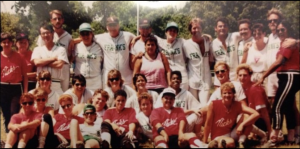
Founded in 1981, the league began with three teams from Massachusetts and Connecticut, filled with mostly gay men and women seeking an outlet and community at a time when the greater movement for gay rights was still in its infancy. The league was a refuge and a chance to play away from a mainstream culture, still standing at odds with the LGBTQ community. “If I hadn’t found this league, I would be isolated,” longtime player and manager Bob Wilson states. “You were around people in the same life, being comfortable to be who you are.” Wilson was a competitive athlete from his youth through high school. “I always loved sports,” he says. “I grew up playing sports and I was a competitive figure skater. So, I was training a lot and had few friends growing up. I was a tall, geeky kid with glasses, so people had plenty of reasons to make fun of me.” For much of his youth, Wilson was isolated and closeted, until a chance meeting at a Westport pub in 1989 led to his entry into the SNEFSL. “There were two ladies whose car was stuck in the mud, so I gave them some assistance. The guy who was with them was the coach of a team, so he recruited me.”
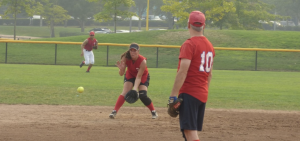
What happened that season, and in the seasons to come, changed Wilson’s life. There was a party every weekend, Wilson recalls. “There were good sports and people were competitive; we played hard and then, after the game, we’d head to the host bar and we would meet people. For me, it was my escape and my spot to be myself. In all these years in the league, I forged friendships through this league. I came out because of this league. I found my partner playing in this league. For a dozen years or so, I found myself crying at the end of the season.”
_
Another longtime player, Joey Farrell, who has competed since 1991, echoes those thoughts. The SNEFSL for him was a first chance to play. “I never played organized sports. I never even thought about sports, even throughout high school,” Farrell recalls. “I first came out around 1988, and the first person who really brought me out in the community told me about the league. I didn’t think I could play, but I tried it and found out I was pretty good.” Farrell also has been the league’s “unofficial” photographer. He’s chronicled over two decades of play, fun, parties, road trips, and a lot of people finding themselves for the first time. “The league was a lot more social back then,” he says. “We made sure that we met everybody in the league. We were a bar league in those early years. We played hard and we partied with our friends afterward.”
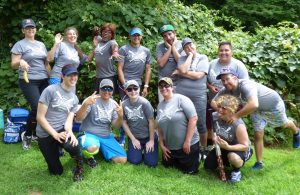
How acceptance has changed the game
The SNEFSL is the smallest league in the 46-member North American Gay Amateur Athletic Alliance, the governing body representing more than 17,000 players in the United States and Canada.
The league had seasons where only two teams competed. According to commissioner Hedwall, that was the situation in her first year playing, in 2003. These days, the league has seven Connecticut-based teams, and the 2019 season began with membership on the upswing. An expansion team was added in 2018. The league has been bolstered by growing acceptance within cis-het communities. In the 1980s and 1990s, the teams were sponsored exclusively by the local gay watering holes in their communities. A number of those are no longer operating. This season, three of Connecticut’s flagship LGBTQ establishments are team sponsors, but sponsors leaguewide come from diverse sectors. Wilson notes that 25 years ago, there was one straight player in the league and “he was the brother of the owner of one of the gay bars that sponsored the team.” Now, Hedwall estimates that more than 40 percent of the participants in the league are straight. “I had straight people who said they just want to play ball and they don’t care about who they play with.”
_
Hedwall and Farrell both note the changes within LGBTQ circles as well. “It’s hard to get younger gay people interested. It’s a lot more accepting and easier [these days] for people to meet people,” Farrell says. “Also, younger people are seeking to be a part of a ‘big gay event.’ That is why many of us old-timers keep holding on.” Adds Hedwall, “The dynamic of the community has changed. When I first joined the league in 2003, there were two gay bars in New London, five in New Haven, for example. Today, there’s one in Hartford, two in New Haven, one left in New London.”
“Among the younger crowd, there’s more competitions for those who want to play sports. As the world got more accepting, the options got wider,” Wilson notes. “And consider, you have Grindr and all the other apps. When I was first coming out, this league was our Grindr. This was our place to meet people.” Wilson view the change as positive. “If straight players want to come and play, let them. This is part of what we were fighting for: inclusion for everyone,” he says. “We’re always going to be who we are, and we continue to recruit players at Pride, for example, but I love seeing that the league is growing and brings in new blood.”
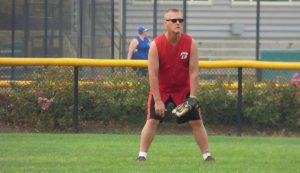
Going back and moving forward
Kris Tonski brought in some of that new blood last season. A competitive softball player, Tonski joined the dominant York Street team in 2014. In 2018, she left York Street to co-found the expansion New Haven Barracudas team, sponsored by the Barracuda Bistro & Bar. On the field, they resembled the 1962 New York Mets, winning one game all season. But they symbolized the diversity within the rainbow community with a team that had gay, lesbian, bisexual, transgender and straight players throughout the roster. “I joined the league to begin with because I needed community at the time and I figured there would be other lesbians around,” Tonski says. “To me, the more letters the better, especially when we can all come together and build community.” The commissioner also notes a want and need for community. She came out as bisexual in the late 1990s. Joining the league in 2003 opened up a chance to learn and teach. “I worked with my friend Eddie Burke to get a New London team back in the league,” she remembers. “Coming out at first, straight people didn’t accept me and gay people didn’t accept me. Coming into the league early on, there weren’t a lot of women; it was mostly men. But you keep showing up. You keep changing minds.”
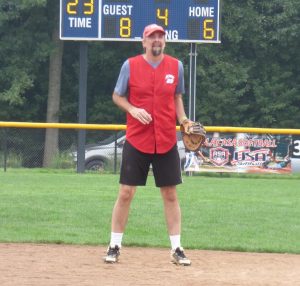
For many older players like Farrell, the new team, with new players – perhaps sporting different pronouns – did change minds. “I met maybe one trans person in my life before last season, and now I’m playing with a group of trans players who came into the league,” he says. “Having trans and questioning players in more numbers in the league helped make the league better.” Hedwall notes that the new team did bring something else the league was perhaps missing – its spirit of community forged in the ‘80s and ‘90s. “It was great seeing a bunch of different people together and build their team, their camaraderie, their community,” she says. “The Barracudas played together and with such joy. I think some of us lost that a little bit.” Adds Wilson: “The new team showed us what we used to be. I know that some on the other teams were a little jealous of their spirit, and we’re all asking ourselves, ‘Why aren’t we like that?’ That’s how we used to be in the league, and I think going
forward, we all need to look at how to get that back.”

Tonski says she wanted to put a team together with a goal of helping the league reclaim that founding spirit and push it forward. She has put her professional skills as a webpage developer to work, and built the SNEFSL its new website. She hopes that project will help reestablish the league’s roots. “In some ways, I think we’ve forgotten the mission of the league or haven’t explained the mission and the history well,” Tonski says. “I would like to put the ‘LGBT’ back in our league more and exclaim, ‘Yes! This is an LGBT league, and it’s a space for everybody to play and come together.’”
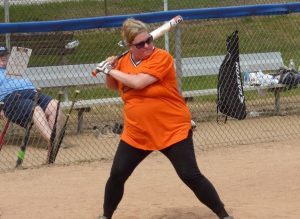
Wilson says that even in an era where acceptance has grown, there will always be a value for the Friendship League, especially for those just looking for a place to be. “A few years ago, I had a teammate who was hanging out with us and no one knew he was gay. He was hanging with us, playing with us, and then one game, he came out to us,” says Wilson. “It was memorable to see him become that comfortable within himself. It shows that the wins and losses isn’t all that this is about.”
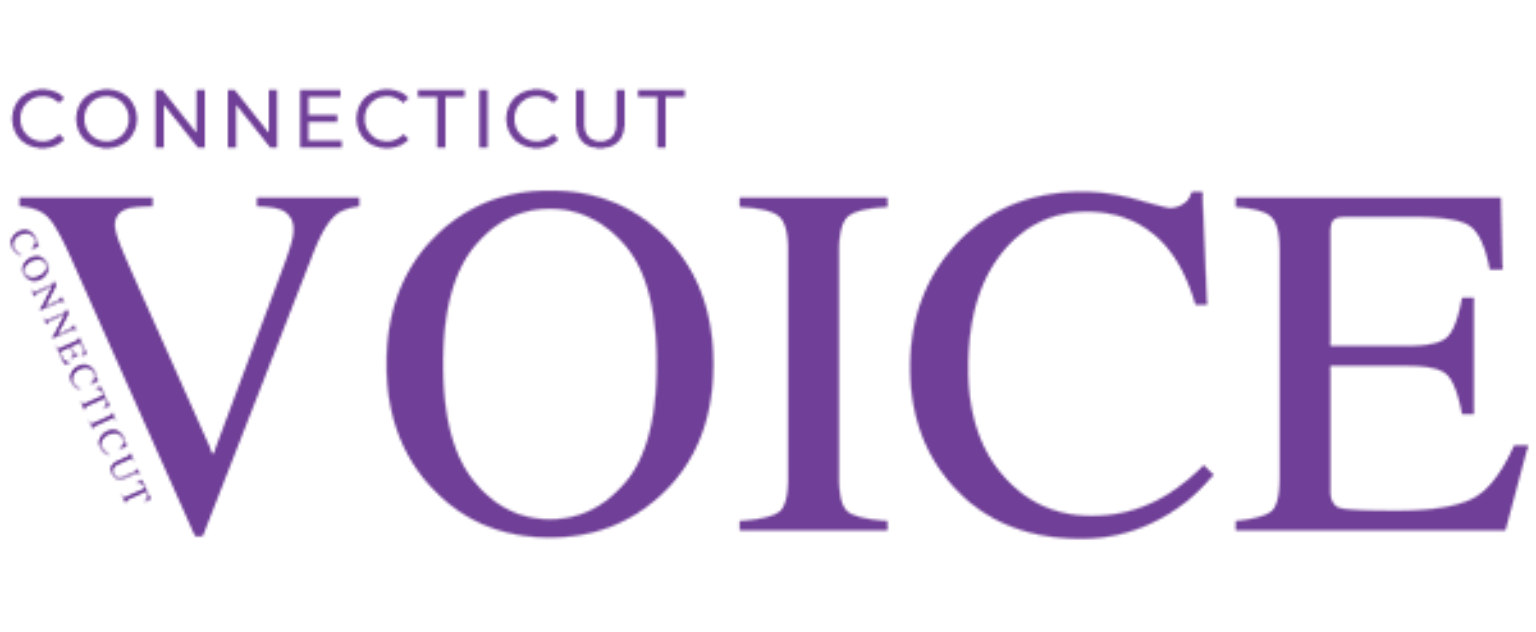





More Stories
Nutmeg State FCU sets its sights on the Future
Kyle Curinga is Playing for Pride
Life in the Fast Lane